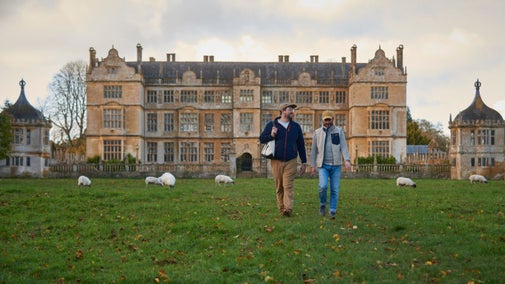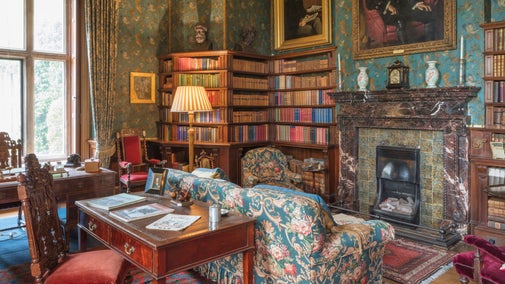
Discover more at Montacute House
Find out when Montacute House is open, how to get here, the things to see and do and more.

Built in the late 1590s for Sir Edward Phelips, Montacute House is a glittering Elizabethan Renaissance masterpiece. Step inside the amazing building of stone and glass to discover more, including the rare and highly decorative 15th-century Tournai Tapestry. Here are just a few things you can expect to find.
The Drawing Room on the ground floor of the house is temporarily closed for conservation purposes. We are very sorry for the inconvenience.
The knight, with his gleaming armour and red wolf or tiger flag held aloft, parades his elegantly decorated horse through a dense meadow of flowers. The design of this type of tapestry is described as millefleurs (a thousand flowers).
The knight appears fearless and triumphant, the epitome of bravery depicted in French tales that were sometimes known as chansons de geste (epic poems or songs of heroic deeds). The knight holds the coat of arms of Jean de Daillon, Seigneur de Laude or Lude (1413–81), who was governor of Dauphiné, a province in south-eastern France.
Daillon commissioned the tapestry in 1477–9, but it was paid for by the town of Tournai as a gift. It was made in Tournai as part of a set by the master craftsman Guillaume Desremaulx (d.1482/3), but only this example survives. It is the earliest tapestry in the care of the National Trust.
This tapestry was designed by Francois Desportes c.1731 but based on an earlier set woven for Louis XIV at the Gobelins factory in Paris. It was woven by Scottish master weaver James Neilson, who introduced many innovations at the Gobelins factory.
The tables and cabinets in the Parlour once belonged to the Chester family of Chicheley Hall in Buckinghamshire. The settee, screen and chairs in the Dining Room are individually lit so the detail of the embroidery can be seen.

At the end of the hall is a plaster panel dating from the 1600s depicting a scene of rough justice. This is known as the “Skimmington Ride”.
All these interesting items can be seen on the ground floor of Montacute House. The first and second floors of the house are closed due to the Saving the Staicases project, and we are sorry for any inconvenience.

Find out when Montacute House is open, how to get here, the things to see and do and more.

Explore the garden of Montacute House throughout the seasons. See the yew trees, affectionately known as ‘wibbly wobbly’ hedges, or take a few moments of tranquillity in the Orangery.

Walk the estate at Montacute House and discover nature, views and landmarks to enjoy throughout the season. Bring along your dog and enjoy wide-open spaces.

Whether it’s a quick bite to eat or some retail therapy you’re looking for, Montacute House is sure to have something for you.

Step inside an Elizabethan Renaissance masterpiece at Montacute House, with its historic interiors, beautiful furniture and fantastic portraits.

If you’re looking for things to do together this spring, why not head over to Montacute House? There is plenty to keep the whole family happy.

The National Trust works hard to ensure that Montacute House and its garden are maintained for the enjoyment of visitors. Find out about some of the jobs we’ve undertaken.

Historic buildings are a treasure trove of stories, art and collections. Learn more about their past and plan your next visit.

Discover decorative mansions and humble Georgian dwellings. Explore a wide variety of historic homes and find out about the people that lived there. There’s plenty to see and do with the family in Somerset.